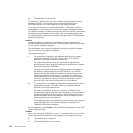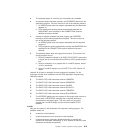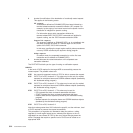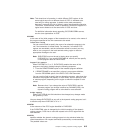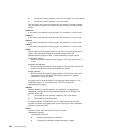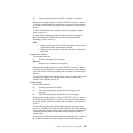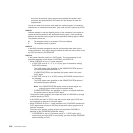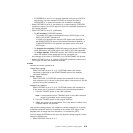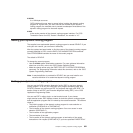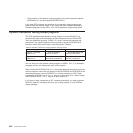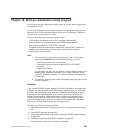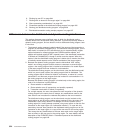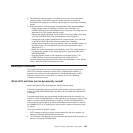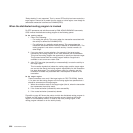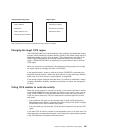2. If the original value was not obtained from the TRANSID option of an EXEC
CICS LINK command. A value specified on the TRANSID option of a LINK
command cannot be overridden by the routing program.
DYRTYPE
is the type of routing request for which the program is being invoked. For
transaction routing, this field is meaningful only when DYRFUNC is set to ‘0’
(route selection) or ‘3’ (notify). The values that can be passed to the dynamic
routing program are:
0 A transaction initiated from a terminal.
1 An ATI request that is to be statically routed.
2 A transaction started by a terminal-related EXEC CICS START
command, where there is no data and no channel associated with the
START.
3 A transaction started by a terminal-related EXEC CICS START
command, where there is data but no channel associated with the
START.
4 A program-link request without a channel.
8 A bridge request.
9 A program-link request with a channel.
A A transaction started by a terminal-related EXEC CICS START
command, where there is a channel associated with the START.
DYRUAPTR
If DYRVER is '7' or greater, this field contains the address of the new user area
(DYRUSERN). The new user area mechanism makes the source of the routing
program independent of the CICS release that created the communications
area. The old user area field DYRUSER is retained only for compatibility
purposes.
The user area can be mapped with the DYRUAREA DSECT.
To ensure that DYRVER is '7' or greater, you must apply the PTFs for the
following APARs to any of your routing or target regions at that CICS release:
CICS Transaction Server for z/OS Version 2 Release 3
PQ81378
In systems where DYRUAPTR is less than '7' the contents of DYRUAPTR are
unpredictable.
DYRUSER
is a 1024-byte user area.
This field is retained only for compatibility purposes—see the descriptions
of the DYRUAPTR and DYRUSERN fields.
DYRUSERID
is the CICS userid associated with the request.
For transaction routing, program-link requests, and bridge requests,
DYRUSERID contains the userid under which the current transaction is running.
By examining this field when it is invoked for routing or because of a
route-selection error (DYRFUNC=0 or 1, respectively), your routing program can
route requests based on the userid associated with the request.
620 Customization Guide



